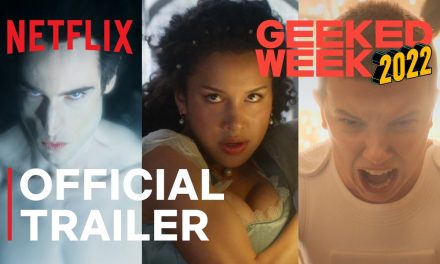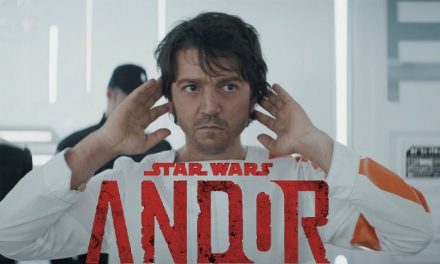It started as a low rumbling in dark chatrooms on the web. Then it slowly grew to include nerd pundits, and then other celebrities, then the man himself! And now it is finally here! The mythical “Snyder Cut” of Justice League!
Justice League: The Legend Lives!

Weta Digital, Warner Media
It seems like we’ve been talking about this for years. (Ever since the release of the theatrical version of the DCEU’s Justice League film, at least. That saw Zack Snyder handing off the reigns of his film universe to Joss Whedon halfway through.) In fact, we have. Shortly after the “Josstice League’s” release, and less than stellar reception, rumors started to bubble up here and there about a secret Zack Snyder cut. Supposedly, the cinematic universe’s architect had actually completed his version of the film. But… The studio canned it, and opted for a more light-hearted version by giving the project to Whedon to reshoot and recut.
Of course, such rumors were ridiculous and untrue. The truth of the matter is that Snyder suffered a horrible personal loss. His daughter Autumn died by suicide in March 2017 in the midst of production on the film. Thus, the Snyder and the studio made the decision that he would step away from the project.
Josstice League

Weta Digital
Apparently Warner Bros. couldn’t come up with a better idea to complete their superhero team-up tentpole than to hire the guy who made their primary competitor’s most successful project. That sounded like a great idea, at first. That is, until you consider the fact that the DCEU was supposed to be the antithesis of the MCU; the darker, grittier but just as successful antithesis. Joss Whedon’s Justice League was none of these things.
Upon its release in theaters a year later, the film it appeared almost as if it two entirely different directors with conflicting visions and styles slap-dashed the film together.
VFXual Dysfunction

Weta Digital
Although the world-renowned VFX powerhouse Weta Digital produced the film’s CGI, many an online piece opined about the final product feeling a bit rushed and incomplete. In addition, though Snyder had teased the arrival of DC Comics mega-villain Darkseid, fans were disappointed when he didn’t appear in the film. Ultimately the theatrical version replaced him full-time by galactic honorable mention Steppenwolf. Sadly, his onscreen appearance left something to be desired.
And so, the fans persisted with their calls to give Snyder another crack at the film, to complete his vision. The hashtag #ReleaseTheSnyderCut took over the social media landscape! Eventually those calls snowballed into a big budget, reshoots, a complete Visual Effects overhaul and a four-hour runtime; Zack Snyder’s Justice League.
Like Watching TNG On Netflix

The film is presented in 4:3 format, the same dimensions as this picture.
Weta Digital
Though Warner Bros. initially intended to release the film in theaters, the film ended up on the HBO Max streaming service. To preserve Snyder’s original vision of the film (screening on a towering IMAX screen) the studio kept the aspect ratio of the movie 4:3 (technically 1.33:1). That gives it the appearance on our home television screens as watching a really high-definition TV show from the 90s.
Weta’s Justice League Second Chance

Weta Digital
Enter the aforementioned Visual Effects Powerhouse, Weta Digital.
I can’t imagine what it must have been like, working in the VFX department at Weta Digital, being handed back a film they had already made, now under the guidance of the original director, going back to a previous, but perhaps more spectacular vision, and being asked to recreate what you had already created.
The task before Weta Digital was not a tweak here and a lighting change there. The digital wizards were responsible for delivering nearly one thousand new visual effects shots, which made up for more than a quarter of the film. That’s over an hour of visual effects footage!

Weta Digital
This not only consisted of reimagining existing sequences with new character designs and action, but entirely new sequences, characters and story points as well. Darkseid was renovated from his original design, prior to getting scrapped, and Steppenwolf was given a new, more powerful look, complete with detailed, sentient armor that moves, flexes and shimmers with his mood.
On top of scene and character redesigns, the team had to blend new and existing footage with new digital concepts and sequences, matching and adjusting to “finished” shots. All while adapting three-year-old digital effects that are effectively obsolete compared to the most recent developments in the realm of CGI. This involves a lot of “updating” of the basic parameters, such as shading and lighting, through new animation software.
The Artists
I recently sat down and talked to Visual Effects Supervisor Anders Langlands and Animation Supervisor Simeon Duncombe, both of Weta Digital, to talk about their work on the “Snyder Cut.”

Weta Digital
Anders has recently worked on such films as the live-action remake of Disney’s Mulan (2020), Alita: Battle Angel (2019), Ad Astra (2019) and Planet of the Apes (2017) which was nominated for Academy and BAFTA awards.

Weta Digital
Simeon’s recent credits include Jumanji: The Next Level (2019), Avengers: End Game (2019), Justice League (2018) and Batman V Superman: Dawn of Justice (2016). Simeon has been at Weta since 2003.
Take a watch of my interview with Anders and Simeon, featuring exclusive footage of their work on Zack Snyder’s Justice League!
Zack Snyder’s Justice League AKA The Snyder Cut is streaming now on HBO Max.





![[Review] Netflix’s Selena: The Series Part 2 Still Holds The Songstress’ Story Close To The Chest](https://thathashtagshow.com/wp-content/uploads/2021/05/project_20210505_2102090-01-440x264.png)